Back in the early 1990s, the PSB Speakers Stratus Gold earned its place as one of my favorite loudspeakers of all time. Even today, these legacy loudspeakers represent some strong, music-first engineering that sets a meaningful bar for what a finely executed loudspeaker should be, even decades later. For a somewhat reasonable amount of money at the time, the PSB Stratus Goldi offered up a lot of loudspeaker that hit nearly all of the high points of floorstanding loudspeakers costing upward of 10 times their selling price.
Only a small handful of floorstanding audiophile loudspeakers are in my Favorite of All Time list, so when the PSB Speakers Synchrony T800 loudspeaker (T800) arrived at my door, I was both excited and a little nervous. I was excited to hear what was next from the legendary designer and lauded member of the National Research Council of Canada, Paul Barton. The slight nervousness is notable because the PSB Stratus Goldi set such a high bar for what PSB loudspeakers are capable of (in their era), I was a bit skeptical that in today’s highly engineered loudspeaker arena, theT800 could represent the same (or better) mix of sonic enjoyment and outrageously high value.
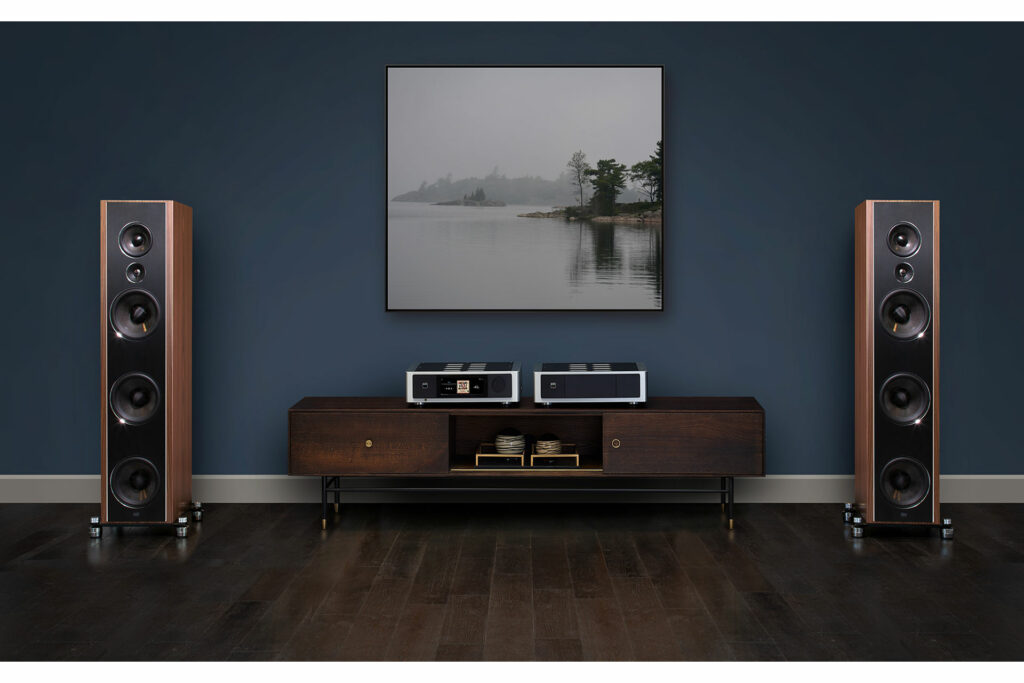
What Makes the T800 Loudspeaker So Special?
- The PSB T800 was developed at the Canadian Research Council over the course of a decade, with extremely rigorous engineering. The company’s ability to gather measurable data around both the technical and listenable aspects of design makes for some of the best sounding speakers, as well as excellent value. Aspiring speaker designers like myself can only dream of what it would be like to have such amazing resources available for the design process.
- The three eight-inch woofers in the T800s are tunable in-room and provide the highest quality bass I have experienced to date from a floorstanding speaker. PSB works hard to isolate the woofers from the cabinet. They also include systems that have extensive bass management via DSP as well. The tunable bass allows near-wall use that will work in all rooms, small to large.
- All the drivers in the T800 have leading-edge motor technologies. These technologies yield loudspeaker drivers that maintain their linearity, resolving power, and extremely low distortion at all levels.
- The tweeter in the PSB Speakers T800 has a technological secret that makes it excel. While listening, I knew PSB Loudspeakers was playing coy about their flagship tweeter when I found it a little tricky to unearth information about the design process. The tweeter’s performance measured so fantastically in the PSB T800 that there had to be something in play beyond a traditional, off-the-shelf tweeter. In a very thorough conversation with the T800’s project manager, Joe De Jesus, I found out the rear chamber (this is like a woofer enclosure but for a tweeter) was painstakingly designed in conjunction with the motor.
- The T800 has a rock-solid cabinet with a very high-quality finish, including the Walnut cabinet and the aluminum baffles/accents. I also love the look of the satin finish, but the overall build quality of the T800s is rock solid.
- The IsoAcoustics outrigger feet on the T800 isolate the cabinet on any surface. These are some very serious feet to help decouple your speakers from the floor and they are included in your package.
- The amplitude perfect crossover electronics of the PSB Speakers T800 are of the same high quality as the rest of the loudspeaker.
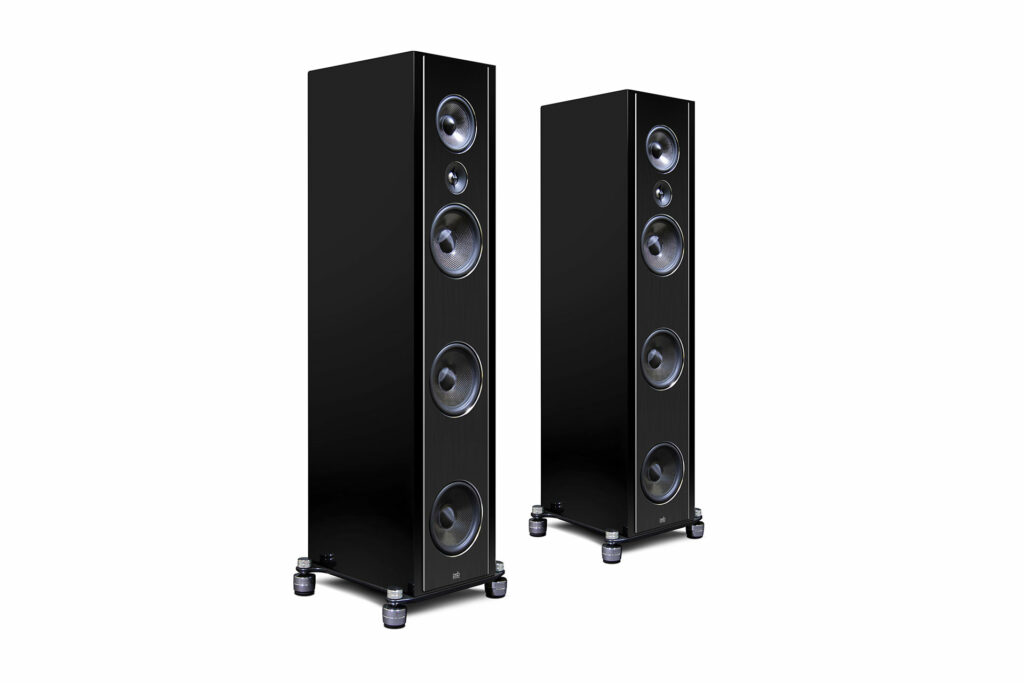
Why Should You Care About the PSB T800 Loudspeaker?
At the National Research Council in Ottawa, Paul Barton met the legendary psychoacoustic scientist, Dr. Floyd Toole, who devoted his work to the study of how we hear, and how it correlated to a loudspeaker’s perceived performance by the listener. Super nerdy stuff and I will spare intimate details, but Paul Barton and his team have painstakingly used a cycle of measurement/engineering, testing, and listening in a double-blind environment to refine the T800. This is not unlike the design process of a Formula 1 car that is constantly adjusted not just for measurable performance, but the human capability of the driver.
This extreme rigor yields a loudspeaker PSB Speakers feels is an organic listening experience. This rigor also fleshes out extremely fine, measurable anomalies from the strangest sources, and triggered micro-corrections in all aspects of the T800. While we see a straight-forward tower loudspeaker with our eyes, the T800 is, in reality, an exercise in extreme patience and engineering that creates a listening experience in room that is truly sensational.
On this note, when I was designing loudspeakers, Dr. Floyd Toole’s Book “Loudspeakers – The Acoustics and Psychoacoustics of Loudspeakers and Rooms” was a monumental turning point in my personal design work, however it made me realize that without the extensive tools and capabilities PSB Speakers has, it was time to hang-up the measurement rig and find another path in the audio world that I am passionate about. If you are a speaker nerd like me, grab the book. You will have zero regrets.
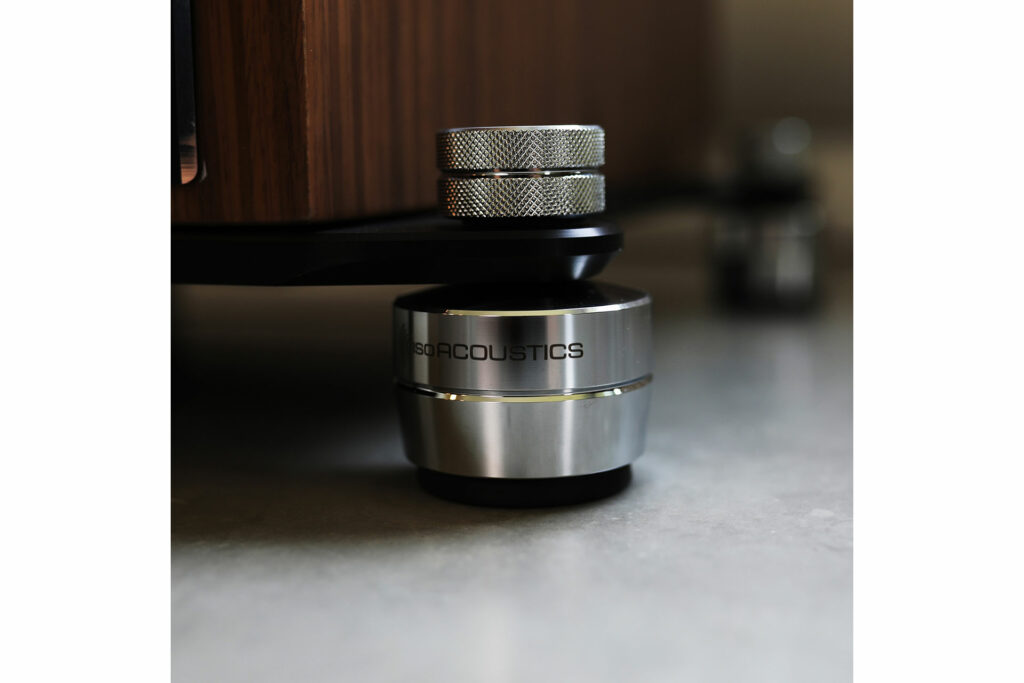
Some Things You Might Not Like About the PSB Speakers T800 Loudspeaker
- The T800 speakers are brutally honest transducers. Due to their high-resolution capabilities, you may find some of your favorite recordings are not as good as you once thought. I found this frustrating on a couple of my personal favorite recordings.
- Some people may not like the seamless bass response of the PSB Speakers T800. The bass is so well integrated into the sound, from top to bottom, there is no boominess or any extra punch. If it’s there in the recording, the T800 will certainly produce it reliably, but older or less fantastic recordings will have no false bloat or faux depth while listening. These are very tight and accurate speakers by design.
- The T800 can be tri-amped but the binding posts are difficult to sort out. My loudspeaker cables have spades on the end of them. It was very hard to stack them, and the provided non-flexible jumpers were frustrating.
- Due to the tunable bass, the T800 isn’t a drop-in-place type of loudspeaker. I think it is tomfoolery to buy a $12,000 pair of loudspeakers then not take the time to set them up carefully in-room. Others do not want the bother and there is nothing wrong with that. It took me a couple of months of careful listening and use of the provided port plugs to find an ideal location for my pair of PSB Speakers T800. The upside is when you lock them in, they sound completely invisible with timbre that is coherent from top to bottom.
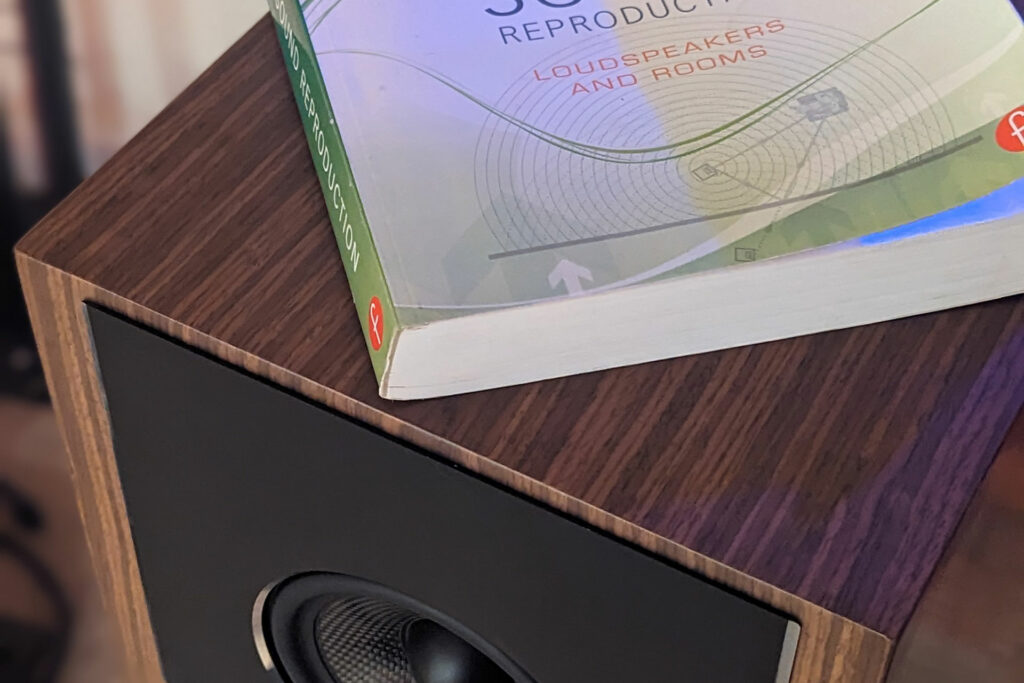
Listening to the PSB Speakers T800 Loudspeaker…
Nearly everything I played on the T800 was akin to experiencing my music for the first time again—that is, once I completed their break in and found the proper setup. The sound is dynamic, instruments are scaled well, the soundstage extends well outside the boundaries of my listening space, and the bass completely pressurizes my 3,500-plus cubic-foot listening space. I did find it frustrating at times to have the 1990s rock I love so much rendered less than lovable due to the PSB Speakers T800’s honest resolving of the compressed dynamics in the recordings, but any recording I could grade a C or higher was experienced better than on any loudspeaker I have had in my listening space before.
The electro-jazz craziness of the song “Bubbles” by the artist Yosi Horikawa, off the album Wandering, is a little audiophile whacky, and not likely something to make a killer audiophile demo by our publisher’s standards, but the way the T800 threw the sound into the room, in a three-dimensional way that extended outside the room and even behind me, basically blew my mind. The icing on the cake was the complete invisibility of the loudspeakers, and while I did not know what was being used to create the sounds, nothing was lost or unrelatable to my ears in terms of what I imagined the sound should be. I have heard this before, and due to the recording, it always throws a great soundstage; however, the experience on the PSB Speakers T800s was other-worldly.
I checked out Diana Krall’s Love Scenes, specifically the opening track, “All Or Nothing At All,” streamed on Qobuz, and through the new uber-high-end silver disc transport by Bricasti Design called the M19 (review pending). I used both the SACD and CD versions through the M19, and out of all formats found the SACD preferable. This slightly warm recording sounded a tad less sweet or warm on the T800. I found the upright bass to have body, impact, and size true to the instrument instead of sounding like it was just some bass from speakers. The piano sounded quick and light, while Krall’s voice had a realistic in-room presence. Finally, the jazzy-sounding Les Paul guitar was no problem for the T800s. Each note of every chord and plucky accent was present across its entire frequency range, anchored in-room. The final picture was as close to a personal concert I could ask for.
I could list 100 more examples here, but I’ll leave you with one last notable track. It’s a monster of a track from the reference recording’s release Pomp & Pipes featuring the Dallas Wind Symphony. Maybe it is a guilty pleasure, but most classical listening by my generation (Gen-X) and younger has gone extinct like the Dodo bird. You do not have to be a sophisticated, Ivy League listener to appreciate Pomp & Pipes, however; especially if you grew up with cool classical soundtracks to your favorite video games. “Alleluia! Ladamus te” has thunderous bass drum, subwoofer range pipe organ bass notes, and a triple forte finale that has made many loudspeakers make noise that is anything but music. The T800, however, resolved all of the deep bass to room compressing levels, even when there were multiple deep bass notes playing at once. This is important, because even on good loudspeakers, most times multiple deep bass notes simultaneously end up being a muddy mess. The low brass section was big and ballsy, anchored in the soundstage, and in the correct apparent scale in the soundstage. Finally, the winds were light and airy, with no sense of being excessively forward, and the cymbals splashed on top, echoing through the venue this recording was made in. I do not listen to this recording often, because it is rare to have loudspeakers that can reproduce it well, so in this sense the T800 was a real treat!
Does the PSB T800 Loudspeaker Have Any Resale Value?
PSB Speakers has an indelible reputation for value, longevity, and performance. The T800s are no exception. They will hold their value over time well; however, logistically, resale may be a challenge given their large physical size and 100-plus-pound heft. What do you do with the boxes if you live in a big city? Maybe sell them in that big city or pay to have them boxed up and shipped off if needed. Trust me: you won’t get the urge to sell a pair of PSB T800s anytime soon.
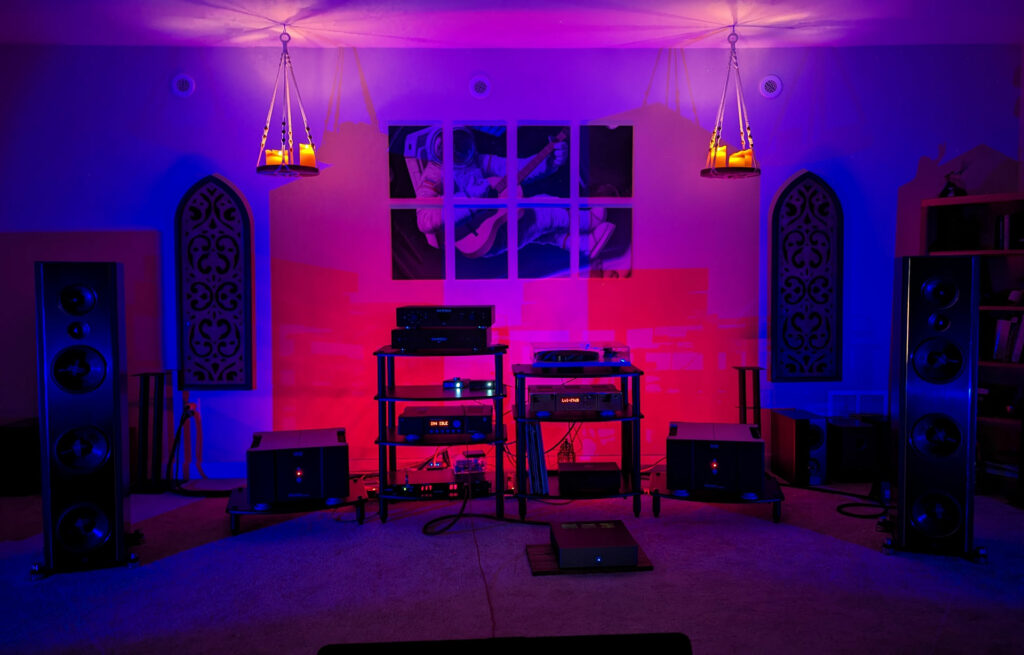
Who is the Competition for the PSB Speakers T800 Loudspeaker?
The Sonus faber Olympia Nova III weighs in at $15,000 per pair. Like many loudspeakers between $10,000 and $15,000 that compete with the PSB T800, it is smaller and does not play as deep. I am including it because Sonus faber has refined its loudspeakers incredibly well in recent years, and the Olympia Nova III is no exception. A definite competitor for the PSB Speakers T800 in terms of timbre, resolution, and soundstage.
Bowers & Wilkins has some heavy hitters in the price range of the T800 as well. The Bowers and Wilkins 803 D4 (read the review) is a technical powerhouse that will provide full-range detail and presence like the PSB Speakers T800. The 804 D4 are priced at $20,000 per pair, but get you into the same product line that world-famous mastering and sound engineering studios like Abbey Road and Skywalker Ranch use. The D4 revisions to their tweeter had publisher Jerry Del Colliano raving about the Bowers & Wilkins 802 D4 in his recent review.
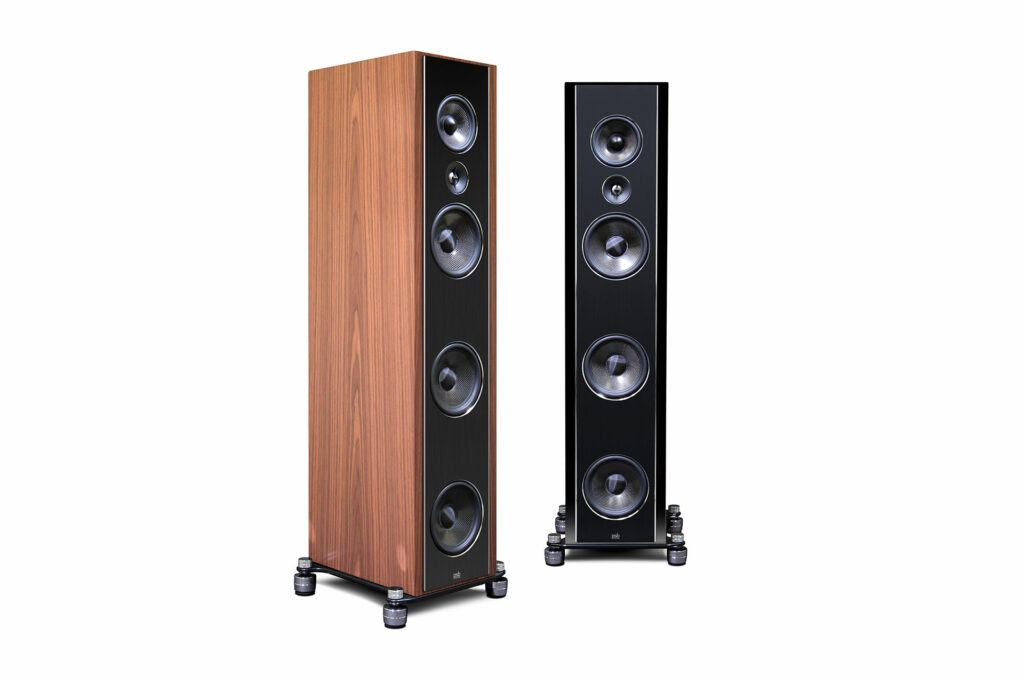
Final Thoughts on the PSB Speakers T800 Loudspeaker…
I am going to make the overly bold statement that the PSB Speakers T800 is all the loudspeaker any audiophile likely ever needs, at any price, in just about any sized listening space. There is a value to the T800 that is in sync with the very aspects of the late Stratus Goldi loudspeakers that placed them on my greatest loudspeakers of all-time list, only the T800s have been refined by today’s modern engineering practices.
This does not mean the T800s are perfect. I was a little annoyed by their brutal sonic honesty at times. It does mean, however, to get a loudspeaker that is truly better (instead of just different) in all aspects of performance, one is going to have to spend a lot more than the T800’s $12,000 price tag. $12,000 for a pair of loudspeakers is still a very heavy lift for most audiophiles, which makes it even more important the PSB Speakers T800 loudspeakers perform as well as they do. If I have my druthers, I’d be adding the PSB T800 loudspeakers to my main listening system as the keystone to tie it all together, but that is yet to be determined at the time of writing. Generations later, the PSB T800 holds fast the very characteristics that put the Stratus Goldi on my all-time loudspeaker favorite list: A financially feasible top-tier loudspeaker that encompasses the best practices of acoustic engineering and psychoacoustic design.




Good to see North American competition for PSB’s European rivals!
I have psb speakers for my surrounding soun system so I know psb quality and these speakers are much more high-end than my speakers.
Paul Barton is a great guy and wonderful speaker engineer!